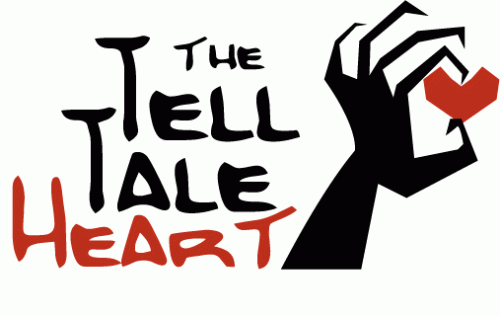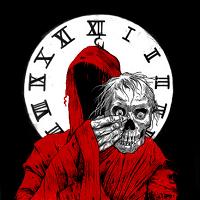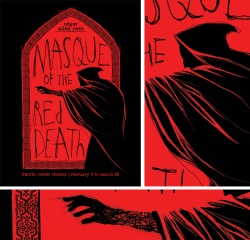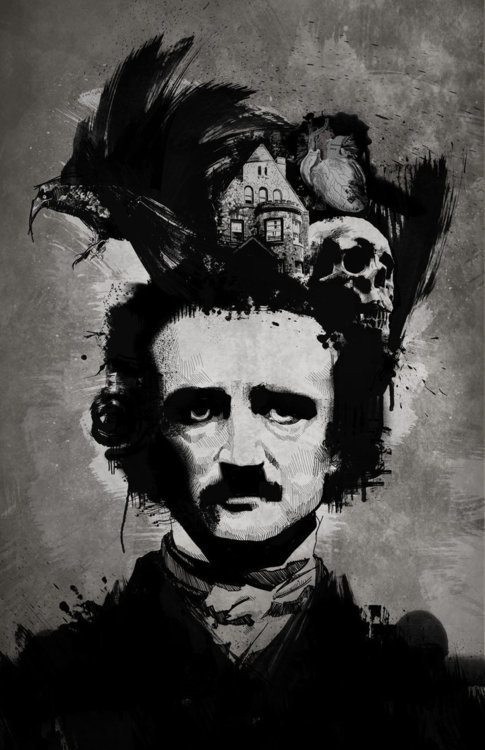-
"Je" de l'écrivain et "jeu" de l'écriture

Pb : Rewriting - Pastiche – Parody : how do literary works echo one another?
-
Par Elarinya le 25 March 2012 à 13:39

Just before the holidays, we started a new session about the pastiche and the parody. In french the title is "Le je de l'écrivain et le jeu de l'écriture". To start, we learnt some definitions :
* An autobiography is a text in which the author is the narrator and he/she tells his/her own story.
* A first person narrative is a text in which one of the characters is the narrator.
* A third person narrative is a text in which the narrator is outside the story.
We spoke about the games that authors use in their novels : they play with words (they can invent words), they play with with homophones (I/eye), they play with setting of the text (acrostyches), they can write distorted texts, parodies or pastiches.
And we are going to discover all this in our new sequence!
 your comment
your comment
-
Par Elarinya le 25 March 2012 à 13:45

The first text which we studied is "The Tell-Tale Heart", a short story by Edgar Allan Poe. In fact we had to analyze it during a test.
Clic here to download the short story
It's a story of a man who decides to kill an old man because he is afraid by his "vulture eye". He spies upon him every night and he waits for the good moment. But will he manage to kill the old man ? What will it happen later?
It's a very terrible short story, so be careful, reader, The worst is yet to come...
Here are two short films based on the short story of Poe, good viewing!
 3 comments
3 comments
-
Par Elarinya le 2 April 2012 à 19:30

Hello ! My homework is now to make a Book Report of a new short story by Edgar Allan Poe : The Mask of the Red Death.
You can clic here to download the text.
Book Report
Title : The Masque of the Red Death
Author : Edgar Allan Poe
Date of publication : 1842 in the Graham's Lady's and Gentleman's Magazine
Setting : Probably in the Middle Age, in the Prince Prospero's dominions.
Characters : Prince Prospero > The prince of a village devasted by a strange disease.
Thousand courtiers > They are locked up in the Prince's Castle to escape to the Red Death.
The person in red > During the party in the Castle, Prospero makes out a strange character in red, but nobody know his indentity.
Plot and personal opinion : The Red Death is a disease who devastes a country, and sow the terror and the panic. The Prince of this country, Prospero, shuts himself away in his fortified castle, with thousand courtiers. They live in luxury and pleasure, ignorant the terrible disease, which strikes down the population. Althought the poor people die, they make party. One night, Prince Prospero organise a masquarade in seven room of his Castle, which are decorated with differents colours : blue, purple, green, furnished and lighted with orange, white, violet. The seventh room is closely shrouded in black velvet tapestries and lighted with the colour of the blood. In this room, there is a big clock, which rings every hour. Nobody goes in this room because it 's very worrisome. During the night, we make out a strange person with a mysterious clothe, like a shroud. Prospero wants know who is this person, but nobody answer. He decides to discover the identity of the frightening guest...
This short story is very exciting and worrisome. There is a lot of suspense and scary elements. The end is surprising and also gloom. But it's a little bit long and there is many complicated vocabulary. However, the author' style is excellent and very fascinating. Poe is a génius in gothic literature and this text proves it.
Attention readers, you cannot maybe sleep any more later...

Study of the Poe' style
I picked up some elements to characterize the style of Edgar Allan Poe.
Imagery : Sound > "all is silent save the voice of the clock", "to be sounded by the bell of the clock"
Aliteration : "glare and glitter", "of terror,of horror"
Simile :"the wild music of the orchestra to seem as the echo of their steps".
Metaphor : "in them beat feverishly the heart of life", symbolizes the group of persons, whichs is still alive.

Is this story gothic ?
In the last lesson, we had a paper about the gothic literature. Now, let us see if this short story answers the characteristics of the gothic literature.
1. Setting in a castle. YES
2. An atmosphere of mystery and suspense. YES
3. An ancient prophecy. NO
4. Omens, portents, visions. NO (not sure, is the Red Death a vision ?)
5. Supernatural or otherwise inexplicable events. YES
6. High, even overwrought emotion. YES (?)
7. Women in distress. NO
8. Women threatened by a powerful, impulsive, tyrannical male. NO
9. Metonymy of gloom and horror. YES
10. The Vocabluary of the gothic. YES
We are 6 elements (on 10), so yes, this is a gothic short story !
To better understand the story, you can see this short animation :
 your comment
your comment
-
Par Elarinya le 11 April 2012 à 11:05

So, today, we return to the short story by Edgar Allan Poe "The Mask of the Red Death".
There is fright, gloom etc, but Is this story really gothic ? To answer to this question I have study 2 points.
I The adjectives and adverbs of the gothic litterature
In this short story, we found a lot of adjectives and adverbs, which refers to the gothic vocabulary :
The life in the Prospero's Castle and the great party organized : "magnificent", "lofty", "voluptuous", "gay",
The gloom aspect : "fatal and hideous", "blood color", "tall and gaunt" (about the red person), "spectral image", "scarlet horror", "unutterable horror", "grave-cerement", "corpse-like", "blood-bedewed".
About the fright : "ghastly", "hoarsely" (when Prospero speaks about the red figure), "pale courtier", "hurriedly", "deadly terror", "despairing".
So there is a big contrast between the first part, where all is wonderful, and the second part, where the horror comes and the atmosphere becomes gloom and creepy.
II The red colour
Poe uses the metonymy to exprims the red colours like "scarlet", "blood-colour", "redness", "gaudy".
The red is omnipresent during the short story. Indeed, it represents the Red Death of course, but it's also a fight against the life and the death.
III The sounds
To accentuate the creepy atmosphere, Poe uses the sounds. Indeed, in the Prospero's Castle, there is a big pendulum (reference to the Pit Pendulum ?) which "swung", with "a dull, heavy, monotonous clang". This strange pendulum makes "a brazen lungs". This sound is "clear and loud and deep and exceedingly musical", in constrast whit the waltzers played by the musicians, who sometimes makes a payse "to hearken to the sound". When the pendulum rangs, there is an echoes, very strange and scared.
Also, there is sound, when the courtiers see the red figure, "twelve strokes to be sounded by the bell of the clock". Moreover, there is "echoes of the last chime", and "a buzz or murmur", some persons whisper.
So, the sounds contribute to make a creepy atmosphere, particuliar in the gothic story.
Conclusion
In conclusion, we can say that The Red Mask of the Red Death is a really gothic short story, because we are a lot of typical elements.
To go farther
We can think that the seven chambers symbolizes something. I made some searches and I founded that it may be an allegory of the etaps of the life. So blue is the birth, purple is the childhood (not sure, because purple is the colour of the mourning), green is the adolescence, a period when all is growing and when the person grow, orange is the adult age, white is maybe the weddings, violet is the old age and red is the death.
 2 comments
2 comments
-
Par Elarinya le 17 May 2012 à 11:39

We have also studied a very famous poem by Edgar Allan Poe : The Raven.
Sum'up : The story takes place during a gloomy night in december, the narrator reads a book and tries to forgett his love : Lenore. Suddenly, he hears a noise : someone is tapping at his door. He opens the door but doesn't see anything. He thinks that it may be Lenore, who wants to see him, but nobody answers. However, he hears and other noise. He says that it's the wind whereas he is a little bit panicked. He opens the window and a majestic raven comes in the chamber. It settles in the bust of Pallas, the goddess of the wisdom. The narrator tries to speak with the raven, but it always answers "Nevermore". At first, the narrator is entertained by the raven, and he speaks about Lenore, but the raven says "Nevermore". The narrator makes a link between Lenore and the raven, he asked if he can see Lenore in the Heaven. The raven says "Nervermore". Then he goes mad, and calls the raven devil, prophet of the evil. He orders that the raven leaves the chamber, but it doesn't move.

To listen the poem : clic here (but attention, it's frightening !).
To read the poem : clic here.
You can also listen my version of the fourth stanza.
If you want to read the poem in french, you can clic here (the translation is by Charles Baudelaire).
 your comment
your comment Follow this section's article RSS flux
Follow this section's article RSS flux Follow this section's comments RSS flux
Follow this section's comments RSS flux
English and American literature



